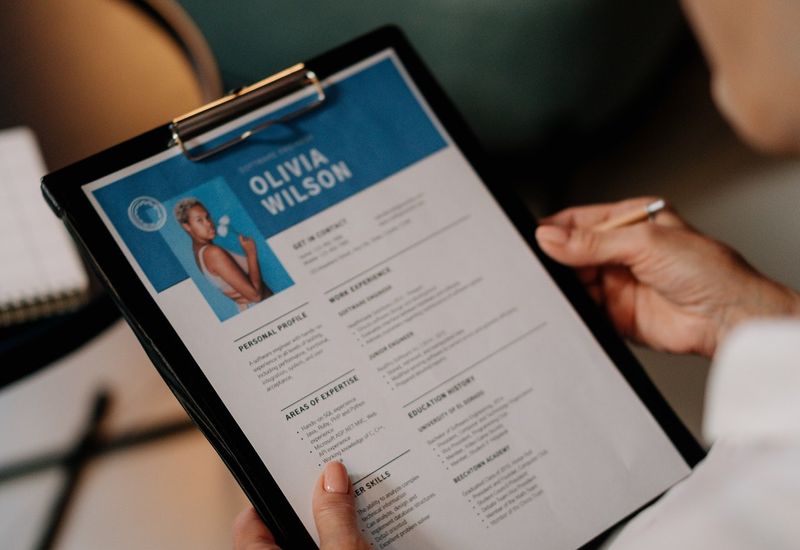Where should you begin with writing the perfect CV? Follow our top tips to get seen by your employer and land the job.
Applying for a new job can be scary, but also exciting. The quality of your CV can make all the difference when it comes to landing an interview. While there are hundreds of free checklists on how to write a CV with templates, save some time with this guide.
How do you start writing a CV?
Don’t get caught up with the presentation and format. Instead, start by jotting down key pieces of information: work experience, personal achievements and education. This will help you to compile a list of skills that you can draw upon later when tailoring your CV.

How should a CV look?
Use your CV to reflect your personality and make a stellar first impression. Here are three presentation tips your CV needs:
Appearance
Stick to professional colours, fonts and easy-to-read sentences. Recruiters get through hundreds of CVs every day, so make sure yours is clear and easy to skim-read. Include headings and subheadings to make it easier for the recruiter to understand your expertise at a glance.
Eliminate the fluff
Your CV should be one to two pages long. Avoid unnecessary personal details and irrelevant work experience. Show you know what the job requires and that you have the skills to match those requirements.
Be professional
You may be an excellent applicant, but if your email address is [email protected], then you might miss out on an interview. This will be their absolute first impression of you, so make it count.

PS You should also send the document to yourself to make sure the format stays the same when it reaches the recruiter.
Should you tailor your CV?
As tempting as it is to write a generic CV for every job you see on LinkedIn, avoid this as it will waste time. If an application doesn't seem personalised, it won't get you the interview.
For each role, read the job specification in detail and research the company. Identify the key skills (both transferable and specific) that the role requires and include evidence of your ability to match those expectations.

Use the STAR acronym for maximum impact
STAR stands for: specific situation, task, action, and result. It's a successful way of providing evidence of the impact of your work. When adding skills to your CV, make sure you add brief examples of each component of the acronym. There's nothing worse than just saying "I work well in a team". Tell the employer about an example of when you did.
Check, check and check again
After writing, reading, editing and proofreading your work, hold off once more before submitting your CV. Errors in spelling, punctuation and grammar won’t go unnoticed, particularly if it’s in the company name!
Finally, don’t just check your CV, but also your digital footprint. If an employer is considering asking you to interview, they may search for you on social media. Be conscious of your privacy settings and what you choose to post. Although people are increasingly open-minded, your potential boss may not be impressed by the pictures of your trip to Magaluf.
Now, it’s your turn to turn your ideas into CV magic. While you’re job hunting, why not join our Student Panel for the chance to make some extra cash?













